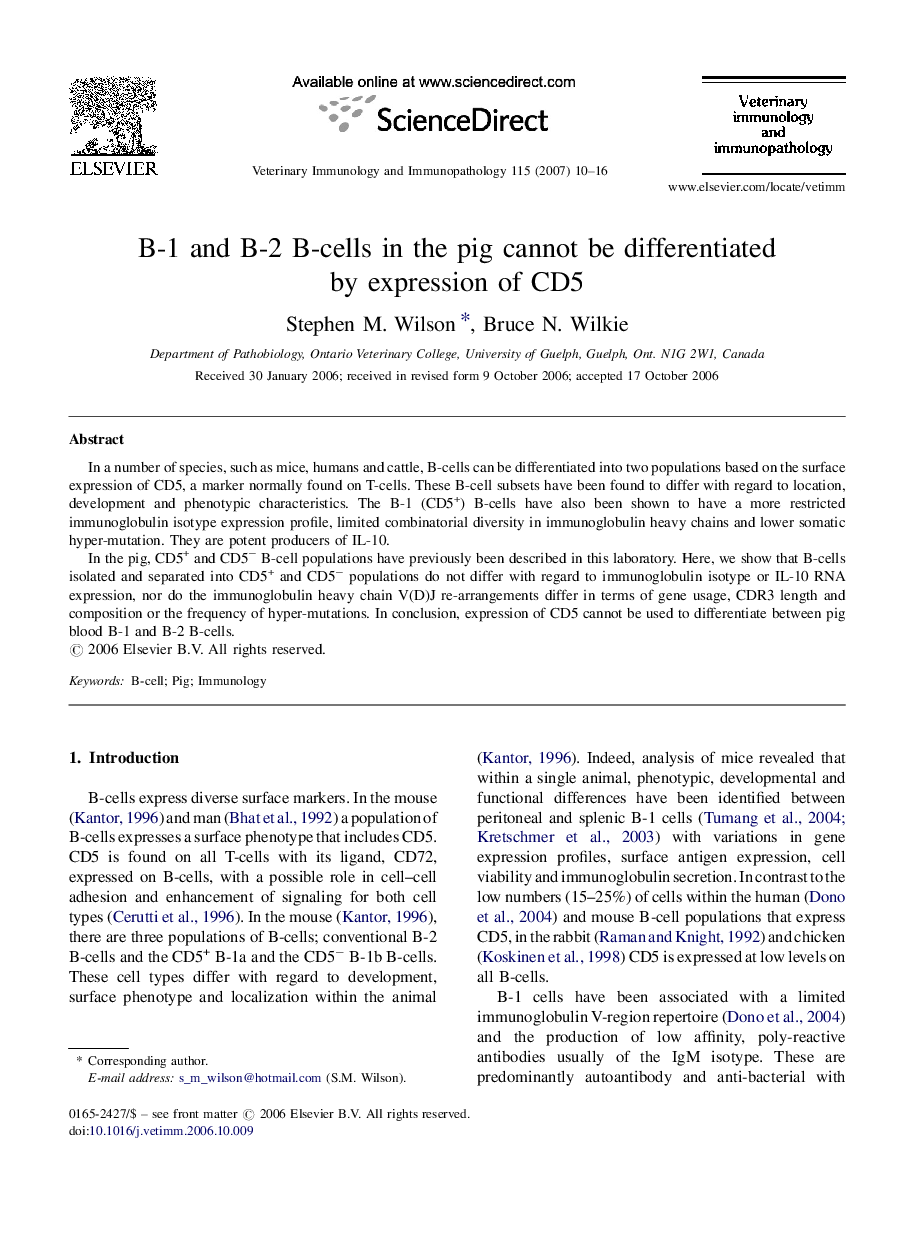| Article ID | Journal | Published Year | Pages | File Type |
|---|---|---|---|---|
| 2463403 | Veterinary Immunology and Immunopathology | 2007 | 7 Pages |
In a number of species, such as mice, humans and cattle, B-cells can be differentiated into two populations based on the surface expression of CD5, a marker normally found on T-cells. These B-cell subsets have been found to differ with regard to location, development and phenotypic characteristics. The B-1 (CD5+) B-cells have also been shown to have a more restricted immunoglobulin isotype expression profile, limited combinatorial diversity in immunoglobulin heavy chains and lower somatic hyper-mutation. They are potent producers of IL-10.In the pig, CD5+ and CD5− B-cell populations have previously been described in this laboratory. Here, we show that B-cells isolated and separated into CD5+ and CD5− populations do not differ with regard to immunoglobulin isotype or IL-10 RNA expression, nor do the immunoglobulin heavy chain V(D)J re-arrangements differ in terms of gene usage, CDR3 length and composition or the frequency of hyper-mutations. In conclusion, expression of CD5 cannot be used to differentiate between pig blood B-1 and B-2 B-cells.
